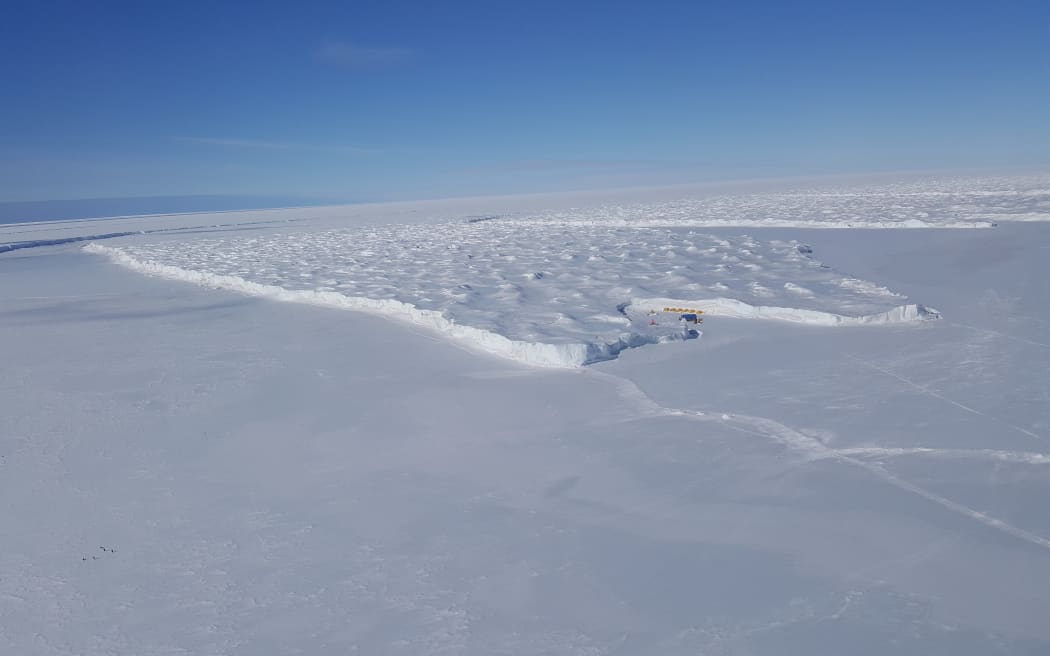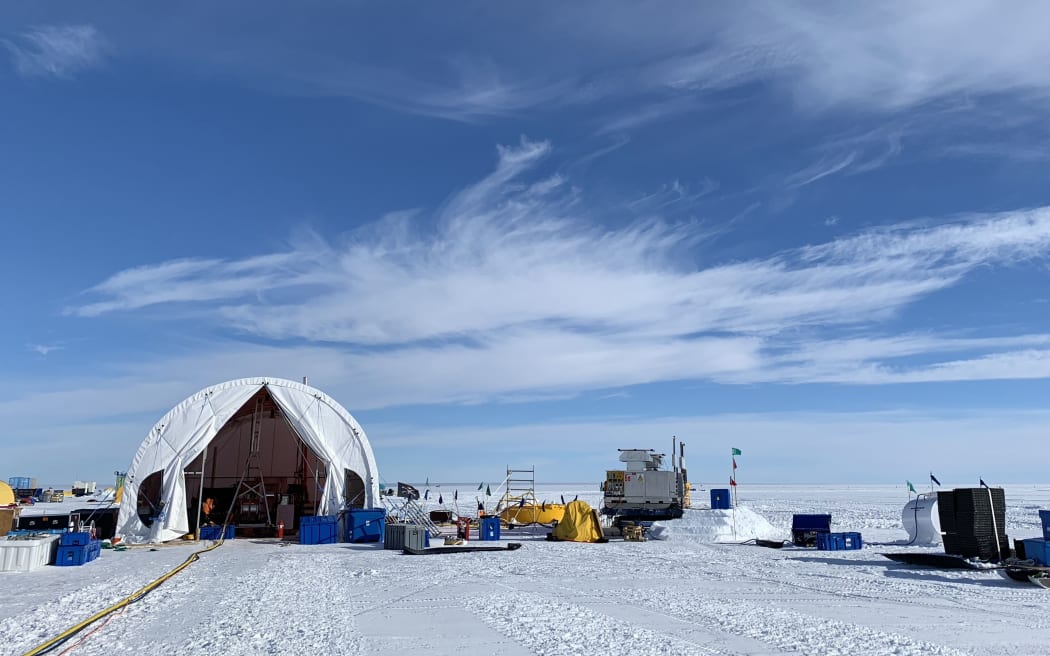It’s a slow-moving stream of Antarctic ice across West Antarctica, that feeds the world’s largest floating ice shelf.
So why has the Kamb Ice Stream been stalled for the past 170 years?

The Ross Ice Shelf meets the smooth annual sea ice at Cape Crozier on Ross Island. The cliffs mark the seaward edge of the largest ice shelf in the world, about the size of France. It is terrestrial ice which has flowed off the Antarctic continent and floats on the sea. The sea ice is frozen seawater. Photo: RNZ / Alison Ballance
Follow Our Changing World on Apple Podcasts, Spotify, Stitcher, iHeartRADIO, Google Podcasts, RadioPublic or wherever you listen to your podcasts.
It’s a puzzle researchers are trying to solve in this episode of Voices from Antarctica, produced by Alison Ballance. This is the last episode we're replaying from the award-winning 2020 series in this mini-rerun.

Research camp - the large tent houses the hot-water drill, used to drill through 600 metres of ice to access the seawater below the Ross ice shelf. Photo: Do Gong
The ice stream goes through periods of flowing and stopping, but as climate change intensifies, it’s important to figure out what this means for the ice – and us – in a warming world.
To figure out what’s happening, the team are using a hot water drill to access the liquid seawater and seafloor beneath the Ross Ice Shelf, which is 600m thick.
Listen to the full episode to dive beneath the ice.
Thank you to Liz Garton for help with this episode.
Learn more:
-
Read Alison’s story from the original episode that first aired in 2020.

